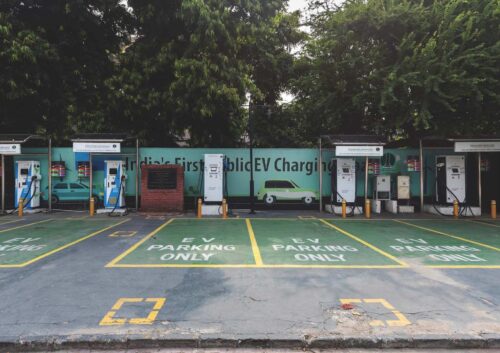
Report | 2025
Intracity Public Charging Guidebook for Indian Cities
India’s urban centers are at the forefront of the electric mobility transition. Of the more than 25,000 public charging stations already deployed nationally, 79 percent are within cities. The next challenge is to scale access, optimize deployment, and align with EV growth. This guidebook from RMI and the State Climate Action Cell, Government of Maharashtra, provides a comprehensive, actionable roadmap to help Indian cities plan, tender, and operate effective public EV charging networks.
Intracity charging is essential to support India’s fast-growing fleet of electric 2-, 3-, and 4-wheelers and the country’s current charger-to-vehicle ratio of 212:1 must rapidly improve. The guide introduces a four-step framework to effectively improve that ratio:
- Target Setting – Demand-based, location-specific goals
- Stakeholder Coordination – Institutional roles and city EV cells
- Smart Tendering – Transparent, public-private partnership-enabled RFPs
- Monitoring and Optimization – Dashboards, service level agreements, and audits

The guide also explores viable public–private models including revenue sharing, fixed rental, and energy-linked tariffs, along with insights on tariff reform, land utilization, and grid readiness.
The city of Pune exemplifies the guidebook’s framework, with 82 public charging locations deployed through strategic planning, cross-agency coordination, and a real-time operational dashboard.
This guidebook offers practical frameworks, policy insights, and implementation tools to support local governance bodies in building a robust EV-ready ecosystem.
